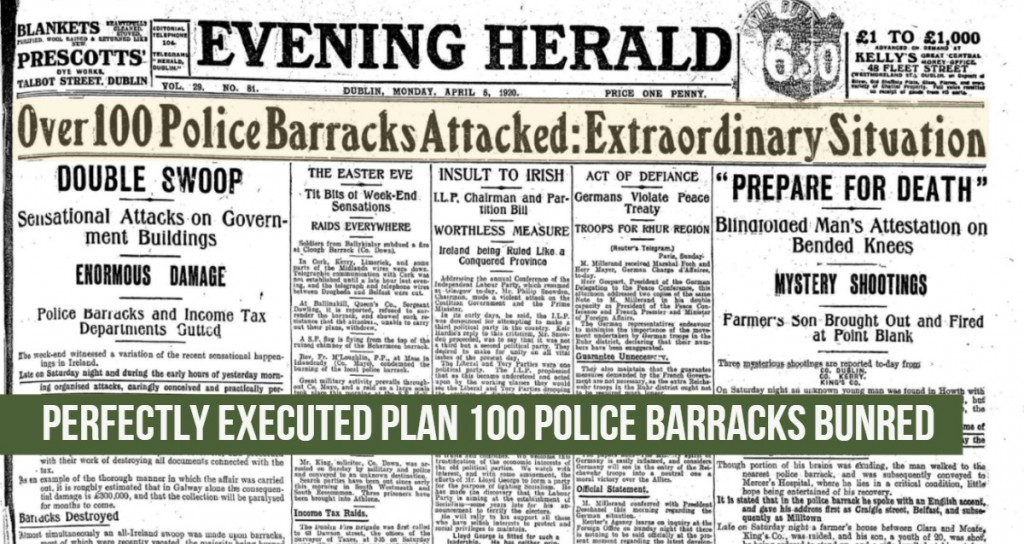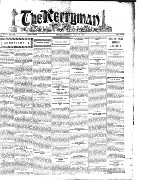
War of Independence - 100 Police Barracks Burned
April 1920 started with the largest scale IRA activity to date in the War of Independence with the systematic targeting of abandoned RIC barracks and other buildings. It was a month during which the issue of Irish independence would be brought to an international audience, while it continued to be time of terror in Ireland. The RIC remained the open target of the IRA, but on a number of occasions in April the RIC would claim victory. Elsewhere, land related issues continued to flare as anarchy set in across the country. In what was a perfectly executed plan, involving IRA units all across the country, the IRA burned over 100 abandoned RIC barracks in rural areas and almost 100 income tax offices. The Evening Herald newspaper estimated that large parties of men must have been involved in this well coordinated plan across the country. A feature again was the cutting of telegraph wires, while explosives were used in many attacks. Many of the barracks had been abandoned by the RIC since the IRA campaign targeting them gathered pace from January 1920 onwards. In some cases where the wives and children of the RIC constables had been left behind as caretakers, the IRA help removed the occupants and their belongings. In some areas, such as in county Kildare, which until this point had witnessed a limited number of attacks on the military, the precision of IRA units was signalled out by the IRA’s GHQ. On that night RIC barracks at Lumville, Donadea, Ballinadrimna, Clane, Ballitore, Kilteel, Carbury, Maynooth, Sallins, Castledermot, Ballymore-Eustace and Kill amongst others were burned in Kildare .On the same night income tax offices were also targeted and documents destroyed and burned. The IRA’s raison d’etre was now to make it impossible for British rule to continue in Ireland.Download Source: Evening Herald, 5 April 1920, page 1 ; See also Kerryman, 10 April 1920, page 1

